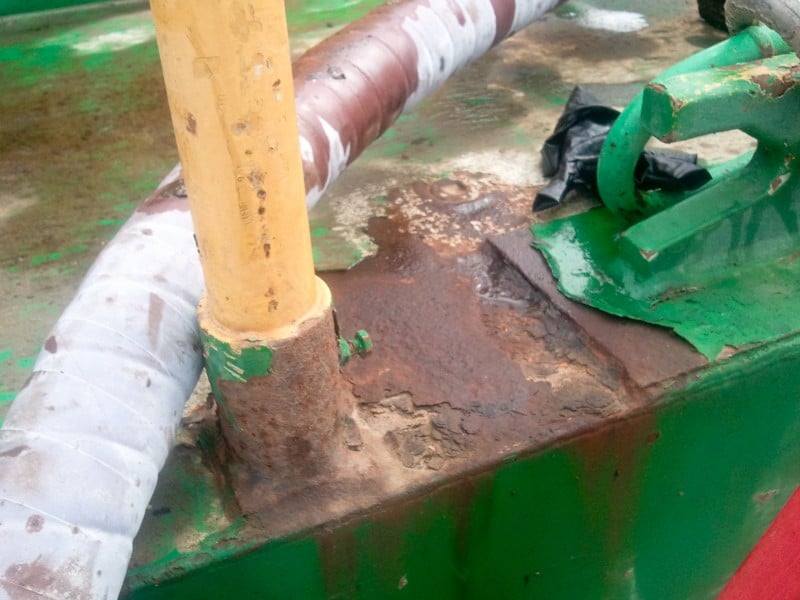There are many reasons a facility may need the extra protection of chemical or corrosion resistant coating. The use of corrosive chemicals in the production process is one. A harsh exterior environment, such as a marine environment is another. Or the need to clean and disinfect with powerful chemicals. No matter the need, there are three basic types of protective chemical coatings to consider.
The first is the epoxy family of products. These two part coatings come in two basic formulations. One is called Bisphenol A and the other is known as epoxy novalac. The nomenclature refers to the types of hardening agents utilized in the processes.
When the hardener is added to the resin a complex set of links or chains is formed. This three dimensional matrix gives the coating its chemical resistance. Generally, the epoxy novalac is more resistant because it has more sites available for cross linking and forms more chains as it cures.
The second family of chemical resistant coatings is polyurethanes. These are also reactive coatings, but their chemistry is different from typical epoxies. Urethanes (as they are often called) can be one part or two part systems. The one part system reacts with moisture in the environment. The two part system utilizes chemicals that cause a different reaction than epoxies to form cross linked polymers.
Polyurethanes are much more versatile than epoxies, depending upon their formulation. They can be made to cure hard and rigid, or more soft and elastic. There are even concrete polyurethanes available.
The final category of chemical resistant coatings is fluoropolymers. The most well known of these coatings is Teflon ©. These compounds’ chemical makeup is built upon fluorine. The fluorine creates extremely strong bonds, which make this coating almost impervious to chemicals.
Of these three categories (epoxy, polyurethane and fluoropolymers) by far the most commonly used are epoxies and polyurethanes. They are extremely versatile, provide outstanding chemical protection and can be applied in various modes. The fluoropolymers are more expensive and more difficult to use.
Whether you are protecting steel structures, renewing a tank lining, protecting a floor from chemicals used in your production process, or any of a thousand other applications, there is a coating that will meet your needs. An experienced industrial and/or commercial paint contractor will help you decide which is best for your company.


